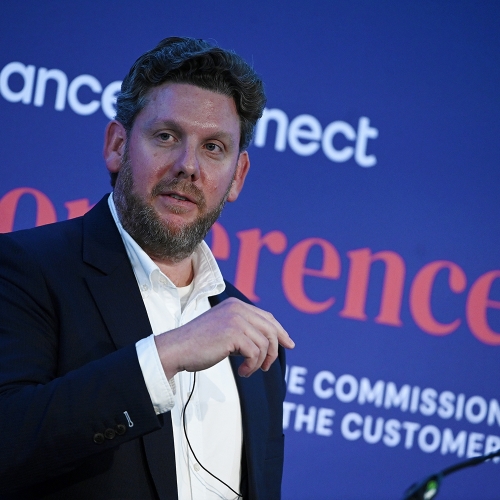In association with Leaseurope and Eurofinas
Summary
Sustainability representatives from the equipment finance industry came together at the Asset Finance Connect ESG Unconference to discuss the emerging opportunities and challenges facing the industry as we transition to net zero.
The Science Based Targets initiative (SBTi) drives ambitious climate action in the private sector by enabling organizations to set science-based emissions reduction targets.
The finance sector is key to unlocking the system-wide change needed to reach net-zero emissions. With the SBTi Finance Framework, financial institutions can set near-term science-based targets that align their investment and lending activities with the Paris Climate Agreement. With a 50% reduction in greenhouse gases required by 2030, financiers need to start focusing on new ‘greener’ financing models.
Many in the industry see that a product shift is required from ownership to servitization and usage as we move to a ‘new world’; with usage-based and ‘As-a-Service’ models seen as the ideal products to tackle environmental issues. However, the transition to these new financing models requires a “total industry mindset change” according to the unconference participants.
As-a-Service models and the circular economy
Usage and As-a-Service models are important and impactful tools to enable the circular economy, all contributing to extending the life and use of products and assets.
The exclusive authority on Product-as-a-Service solutions, Black Winch, supports organisations in turning a product-based business into an in-house and circular subscription model and moving from transferring ownership to providing usership. Black Winch helps companies to re-think business models around servitisation and circularity to help organisations stay tuned to market changes.
Black Winch’s Sophie Féret believes that the industry needs to take a “holistic view of the ESG journey” with ESG seen as “an enablement to progress to the circular economy.”
The circular economy aims to eliminate waste by reusing it in the production process of manufacturing new products and to extend the life of these products. However, its implementation will not be effortless. The As-a-Service rising model, which is defined by the sale of the use of the product rather than the product itself, can contribute to extending the life and use of many products when applied to an asset, and therefore links to the circular economy.
For the users, the usage-based model enables them to satisfy their needs without the burden of ownership and without the need to continuously make large investments. It means that the manufacturer who owns the product has the responsibility to maintain its product in as near to purchase-day condition as possible. At the end of the many life cycles, the manufacturer is responsible for the after-use step, whether it is remanufactured, recycled or reused.
For the manufacturer, there are many economical and financial advantages with a usage-based business model: recurring revenue streams, maintenance and service product bundles, increased customer loyalty, flexibility and scalability. However, the manufacturer is now passed the risk from the financiers, with a focus on performance risk.
The goal of the usage model is that the asset is to be used for the longest time possible, by a variety of clients, whilst providing the best user experience possible. Therefore, the durability of the product is crucial; a solid and dependable product will be used for a long time, whether it is by the same user or many others.
Because the manufacturer is able to reuse the raw materials and various components after the product’s main lifecycle, the natural resources consumption decreases. The environmental and social impacts that are inherent to the extraction of raw materials and the production of one asset are therefore spread across many users instead of one asset for one user. The value of the raw materials is optimised to the maximum.
The usage-based model promotes the principles of a circular economy and, since users are more and more sensitive to environmental concerns and tend to choose the most sustainable solution, the As-a-Service business model is an opportunity to seize.
With users and manufacturers increasingly being asked to provide key information on the environmental impact of activities, As-a-Service allows all the players and their asset financing banks to access and monitor key data about environmental concerns, specifically around production and usage of the assets.
Changing mindset
While the case for usage products is compelling, many participants believe that such models will take time to take hold in the industry and will require a mindset change for the whole industry – manufacturers, finance companies, customers – and, as a result, the industry will get the maximum life out of the asset.
Manufacturers will need to redesign products to be more circular and part of a pay-per-use model, while finance companies will need to better understand this new economy and restructure their finance concepts to allow pay-per-use to thrive.
Many unconference participants see the adoption of As-a-Service models as a commercial and economic challenge for the industry. The transitional change to usage-based products requires a different approach to risk, documentation, sales and marketing.
Sales forces will need to be re-educated in order to sell a totally different financial product, or new younger talent recruited who think, act and sell completely differently. A further obstacle is finding customers who are willing to take a leap of faith and change to new sustainable models.
It was highlighted during the session that whilst customers appear to want these changes to help the transition to net zero, they too need to be re-educated so that they don’t continue to opt for traditional methods that they know and are comfortable with.
To scale up these new finance models, a fresh perspective is needed, without a comparison between traditional models.
Some finance houses see pay-per-use as a massive step for financiers and a very difficult market in which to shift. However, a huge step forward will happen for usage products when larger businesses start to support the circular economy and promote the second-hand life of assets. New financing products are essential for the transition to net zero.
We are living in an era where subscriptions are infiltrating our common life e.g. streaming movie channels; it will therefore only be a matter of time before these products are commonplace in the asset finance industry.
Partnerships needed to bring together a solution
Many businesses won’t be able to reach net zero alone. Collaboration and partnerships will be a key factor of success on the road to net zero, especially when trying to adapt to new usage-based circular models.
The uncertainty surrounding emerging technology, new risks and residual value unpredictability has led many banks and financial institutions to be hesitant about these new financing models.
With traditional financing models, banks have experience with credit risk and expertise at the beginning and end of the asset’s life. However, the period in-between is the most important part of the asset’s life in the circular economy.
Finance houses therefore need to create partnerships within their ecosystems, including manufacturers, asset managers and third-party consultants, to assist with the uncertainties and new risks.
The industry needs to deepen manufacturer relationships and enter into risk sharing or buy-back agreements in order to allow proper risk-taking on new assets. Lenders need to get smart enough to assess which manufacturers have the right technology to make it past the first wave of consolidation that will inevitably occur in the coming two to three years.
Knowledge needs to expand beyond a simple financial analysis – lenders need to develop the acumen to go beyond the numbers and get comfortable with the long-term potential of start-up players in the transition.
Confidence needed in new models
Before entering the new world of usage-based products, many funders and manufacturers need to gain confidence with the transition, which can be fuelled by data from client usage and manufacturers.
Through a new emerging data set, software ratings company Twist can provide the infrastructure to help companies get comfortable with new business models. Data such as how products are shared, remanufactured, resold, is provided to investors by an API that reports live ratings on the environmental and economic impact of circular companies. This is data that, until now, has been foreign to the asset finance industry. The digital and live way of conveying the data reflects the dynamism of the new business models.
Documentation issues
A number of participants raised concern about the lack of a Hell or High-Water clause in usage-based contracts. To promote confidence in these new financing models, changes are needed in contractual documentation. However, this process could take time with slow baby steps.
Some suggested that the contracts need to be standardised to pass through law with industry collaboration essential to provide standardisation.
Concluding remarks
The transition to a ‘new world’ of usage-based models is cautiously welcomed by the asset finance industry, but time and a mindset change are needed to enable the transition to these new environmentally-friendly financing models and circular economy.




